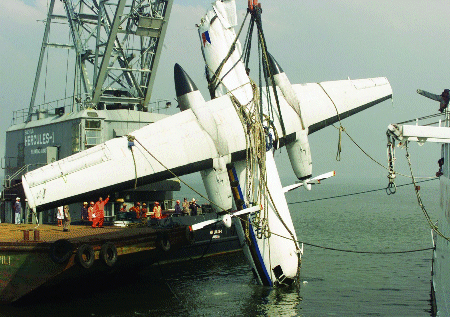Engine or power failure has emerged as the culprit in the loss of a Luxair Fokker 50 on approach to Luxembourg Findel Airport this month. The same cause is also behind last week's Fokker F27 crash in the Philippines.
Investigators of the 6 November Fokker 50 accident in Luxembourg say the flight data recorder (FDR) indicates an almost simultaneous "rapid" power loss in the Pratt & Whitney Canada PW125B engines, and that they were either stopped or shut down before impact without being feathered, but the reason for the failure is not yet known.
Fuel shortage, birdstrike and sabotage have been ruled out as the cause of the accident, in which 20 of the 22 people on board died (Flight International, 12-18 November). Temperature and dew point at the airport were 4°C (39°F), leading to speculation that engine intake icing may have played a part, but investigators say more information is needed before a conclusion can be reached.
The Philippine F27, an Mk600 operated by Laoag International Airways, crashed into the sea on 11 November after take-off from Manila when its starboard engine failed, says the Philippine Air Transportation Office (ATO). Twenty of the 34 people on board were killed. The wreckage was later recovered from the water.
Philippine ATO director-general Alberto Yap says investigators have received an amateur video that clearly shows the F27's right Rolls-Royce Dart engine stopped and propeller feathered. The aircraft then descended to ditch in shallow water in Manila Bay. Laoag's three remaining F27s have been grounded until they have been checked for faults.
A B-N Group BN-2A Islander operated by Dirgantara Air Service crashed soon after take-off from Tarakan Airport, East Kalimantan, Indonesia, on 7 November, killing seven of the 10 people on board.

Source: Flight International























